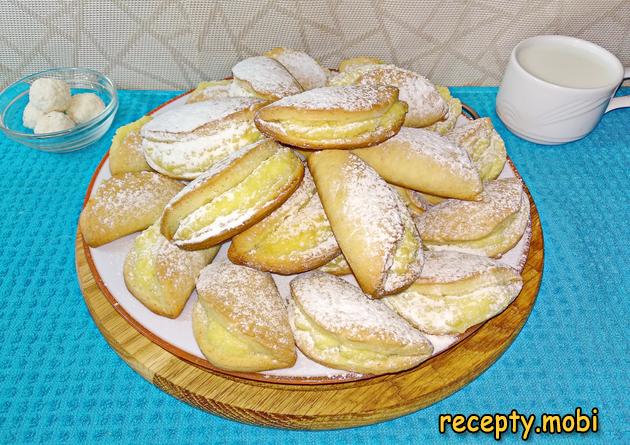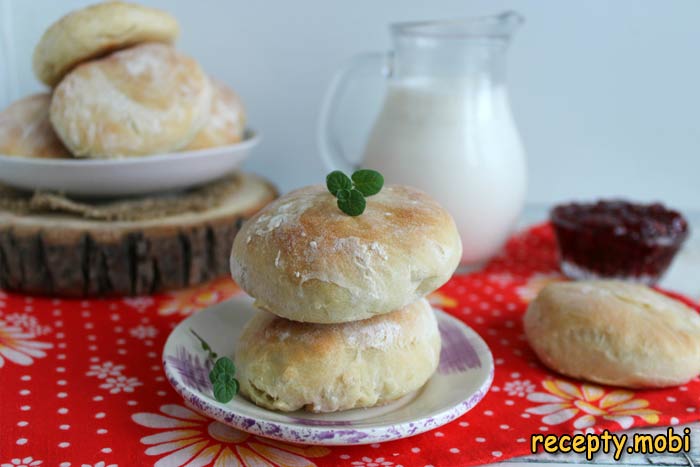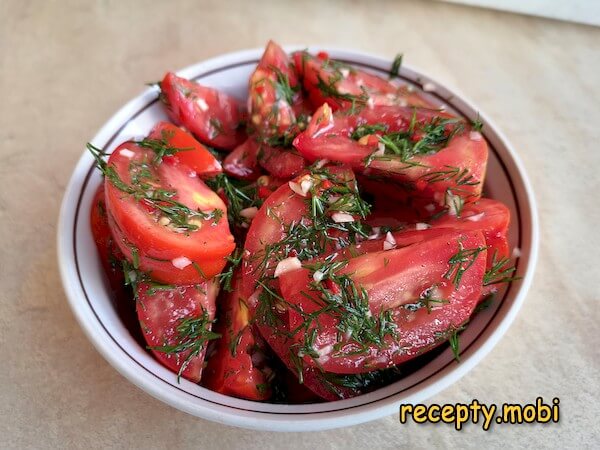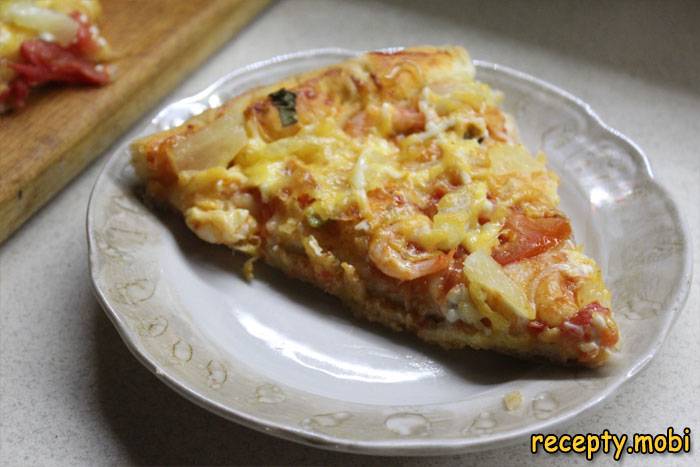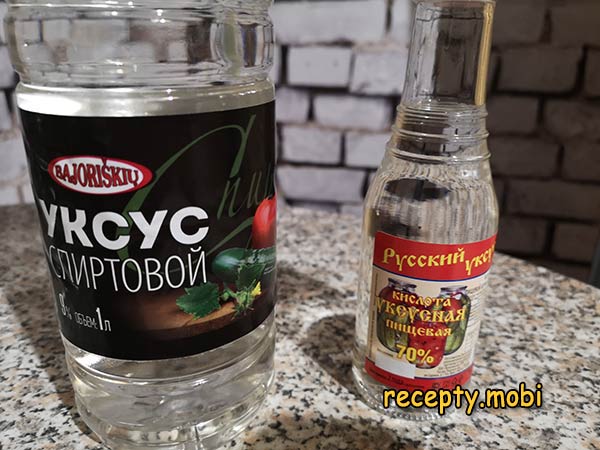
How to dilute 70% acetic acid up to 9% vinegar, 6% and 3%
In the composition of culinary recipes, acetic acid of different concentrations is found: 70%, 9%, 6%and even one percent. It is unlikely that the housewives hold bottles with different solutions in the kitchen, but if there is vinegar essence and you know how to dilute vinegar 70% to 9% vinegar, then at home you can get the right proportion.
Essence is a concentrated aqueous solution of acetic acid, acid is contained from 70% to 80%.
In the dining vinegar, the acid content is on average from 3% to 15%.
Differences in the density of vinegar (1.0 g/cm3) and water (1.05 g/cm3) are so insignificant that their mass is considered identical. Therefore, both the essence and its aqueous solution are calculated the same by mass.
Between the volume of the liquid and its weight, you can also set an equal sign, therefore it does not matter, are indicated in the recipe for gram or milliliters.
How to dilute vinegar correctly
First of all, calculate the required amount of water and vinegar according to the proposed schemes. The mixing process itself is very simple.
The right amount of cleaned or boiled cooling water is first poured into the prepared dishes, and only after that is the vinegar is carefully added. Mix.
For breeding, do not use metal containers.
How many milliliters of vinegar in a spoon
How many milliliters of vinegar in a tablespoon. The spoons produced in the USSR contain 15 ml of vinegar. And now, according to GOST 32583-2013, the capacity of the tablespoon should be 15 ± 2 ml, but on sale they are found with a capacity of 18 ml. If the dishes were produced abroad, the capacity of the spoon may well be 20 ml.
In dessert - 10 ± 2 ml.
In tea - 5 ± 1 ml.
In coffee –3 ± 1 ml.
How many grams of vinegar in a spoon
As in the case of milliliters, the weight of the concentrated 70% and table vinegar:
- in a tablespoon - 15 grams;
- in a dessert spoon - 10 grams;
- in a teaspoon - 5 grams;
- In the coffee spoon - 3 grams.
How to measure vinegar with a spoon
If we take into account that tablespoons with a capacity of 15 ml are more common, it is not difficult to calculate the required amount of liquid.
- 10 ml of vinegar is 2/3 of the tablespoons.
- 20 ml is 1 tbsp. + 1 tsp
- 25 ml is 1 tbsp+ 2 tsp.
- 30 ml is 2 tbsp.
- 40 ml is 2 tbsp+ 2 tsp.
- 50 ml is 3 tbsp+ 1 tsp.
- 60 ml is 4 tbsp.
- 70 ml is 4 tbsp. + 2 tsp
- 80 ml is 5 tbsp. + 1 tsp
- 90 ml is 6 tbsp.
- 100 ml is 6 tbsp. + 2 tsp
Since the volume of tablespoons fluctuates, for your convenience we offer two calculation options to obtain 9% table vinegar from concentrated essence 70%.
|
Concentrated vinegar essence 70% |
Drinking water |
|
1 tbsp. with a capacity of 15 ml |
7 tbsp. or 21 tsp |
|
1 tbsp. with a capacity of 20 ml |
7 tbsp. or 28 tsp |
How to dilute vinegar 70% to 9% table
To get 9% vinegar from 70% vinegar, you need to add 1 part of concentrated vinegar to 7 parts of drinking water.
Example: To get 240 ml of table vinegar 9%, we measure 210 ml of water and add 30 ml of vinegar 70%to it. That is, we measure water (it turns out 210 ml) with a measuring glass of 30 ml 7 times and measure vinegar (30 ml) once.
|
70% Vinegar |
Water |
|
10 grams |
70 grams |
|
20 grams |
140 grams |
|
50 grams |
350 grams |
|
100 grams |
700 grams |
Calculation of proportions
To get solutions of table vinegar of different concentrations, dilute the essence of 70% as follows:
|
The concentration of the solution |
Drinking water |
70% Vinegar |
|
30% |
1.5 parts |
1 part |
|
10% |
6 parts |
1 part |
|
9% |
7 parts |
1 part |
|
8% |
8 parts |
1 part |
|
7% |
9 parts |
1 part |
|
6% |
11 parts |
1 part |
|
5% |
13 parts |
1 part |
|
4% |
17 parts |
1 part |
|
3% |
22.5 parts |
1 part |
How to Dilute Vinegar Using a Formula
This method yields the most accurate results, but it is best for those who enjoy calculations.
To dilute vinegar to the desired percentage concentration, use a simple formula.
W = K × Y : Z
Values of the Formula:
W is the target value (the amount of essence needed for dilution).
K is the amount of solution you want to obtain.
Y is the desired concentration of acid (9%, 6%, 3%, etc.).
Z - concentration of existing essence (70%, 80%)
Example Calculation:
You need to obtain 100 g of 9% table vinegar, and you have 70% essence available.
Multiply the desired volume (100 ml) by the desired concentration (9%) and divide by the concentration of the acid you have (70%). You get:
100 × 9 : 70 = 12.8
This means you need to take 12.8 ml of vinegar essence and add enough water to make a total volume of 100 ml. Let's calculate:
100 - 12.8 = 87.2.
According to precise calculations, to make 100 ml of 9% vinegar, you need to mix 12.8 ml (rounded to 13 ml) of 70% vinegar essence with 87.2 ml (rounded to 87 ml) of drinking water.
Precautions
Please take precautions. When working with essence, avoid contact with skin and eyes to prevent chemical burns. If the concentrate gets on your skin, rinse it off immediately with plenty of running water for about 10 minutes. Then treat with baking soda or soap and rinse again.
Store the solution tightly closed in a place inaccessible to children.
